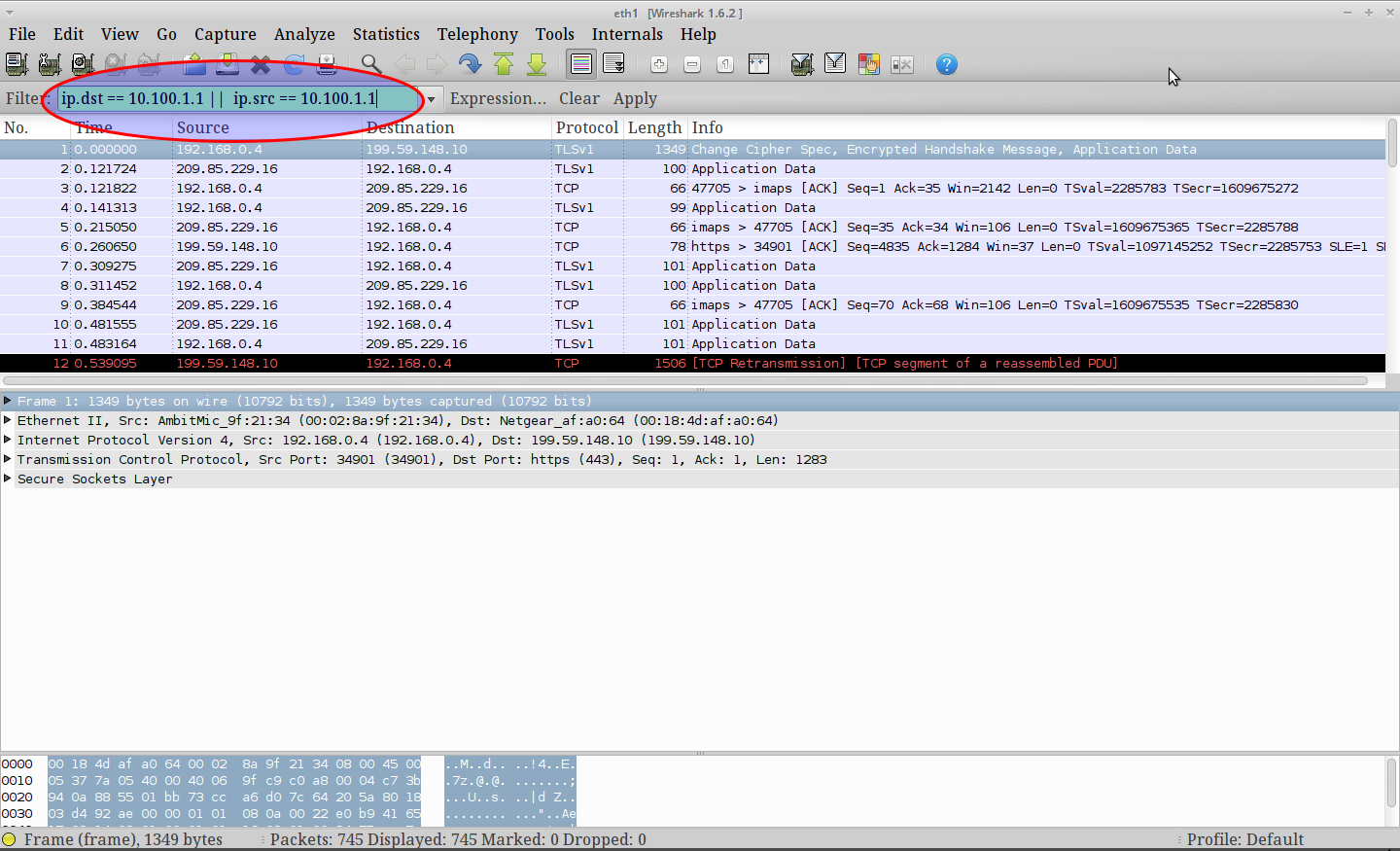


Now you can see the information about the request such as Host, User-Agent, and Referer.Įxpand the GET to reveal even more information such as the URI and HTTP Request Version. Expand the Hypertext Transfer Protocol detail: Working with the GET Method Filter displayed above, click on a packet in the Packet List Pane and then look at the information in the Packet Details Pane. Viewing HTTP Packet Information in Wireshark Now you’re left with all of the GET requests for assets from the website. To filter for these methods use the following filter syntax: = requestmethodįor example, if you wanted to filter for just the GET requests, enter the following filter in the Display Filter toolbar: = “GET” If you want to dig into your HTTP traffic you can filter for things like GET, PUT, POST, DELETE, HEAD, OPTIONS, CONNECT, and TRACE. tcp.port = 80 || ip.addr = 65.208.228.223 Wireshark HTTP Method Filter You can also use the OR or || operators to create an “either this or that” filter. Notice only packets with 65.208.228.223 in either the source or destination columns is shown. If, for example, you wanted to see all HTTP traffic related to a site at xxjsj you could use the following filter: tcp.port = 80 and ip.addr = 65.208.228.223 If you want to filter for all HTTP traffic exchanged with a specific you can use the “and” operator. Filtering HTTP Traffic to and from Specific IP Address in Wireshark Now you’ll see all the packets related to your browsing of any HTTP sites you browsed while capturing. To display all the HTTP traffic you need to use the following protocol and port display filter: tcp.dstport = 80 You’re missing the setup handshakes and termination tcp packets. The unfortunate thing is that this filter isn’t showing the whole picture. You’ll notice that all the packets in the list show HTTP for the protocol. To display packets using the HTTP protocol you can enter the following filter in the Display Filter Toolbar: http is a good one because they have a very large site that loads a lot of information and (at the time of writing this) they have not switched to HTTPS, sadly. To start this analysis start your Wireshark capture and browse some HTTP sites (not HTTPS). Many people think the http filter is enough, but you end up missing the handshake and termination packets. Filtering HTTP traffic in Wireshark is a fairly trivial task but it does require the use of a few different filters to get the whole picture.


 0 kommentar(er)
0 kommentar(er)
